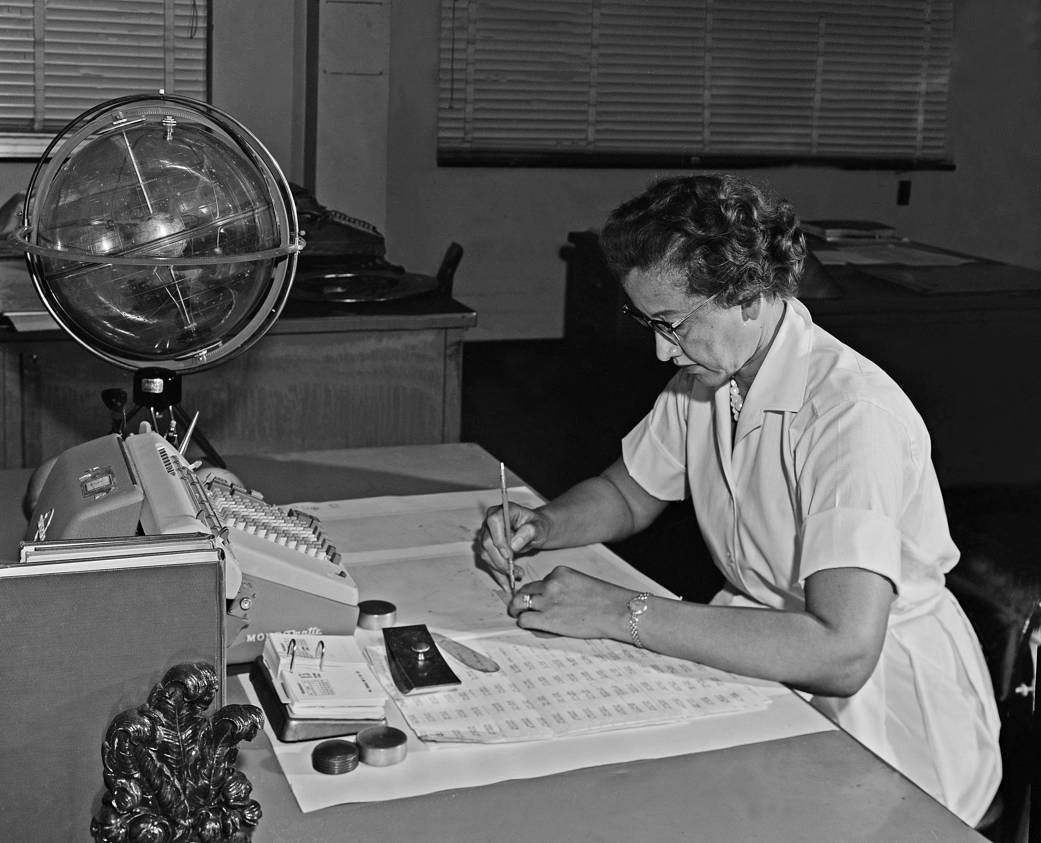NASA research mathematician Katherine Johnson is photographed at her desk at NASA Langley Research Center with a globe, or “Celestial Training Device,” in 1962. (See astronaut John Glenn with a similar device.)
Born on Aug. 26, 1918, in White Sulphur Springs, West Virginia, Johnson began her career in 1953 at the National Advisory Committee for Aeronautics (NACA), the agency that preceded NASA, one of a number of African-American women hired to work as “computers” in what was then their Guidance and Navigation Department. Johnson worked at Langley from 1953 until her retirement in 1986, making critical technical contributions which included calculating the trajectory of the 1961 flight of Alan Shepard, the first American in space. She is also credited with verifying the calculations made by early electronic computers of John Glenn’s 1962 launch to orbit and the 1969 Apollo 11 trajectory to the moon. Johnson worked on the Space Shuttle Program and the Earth Resources Satellite and encouraged students to pursue careers in science and technology.
Image Credit: NASA Langley Research Center



























